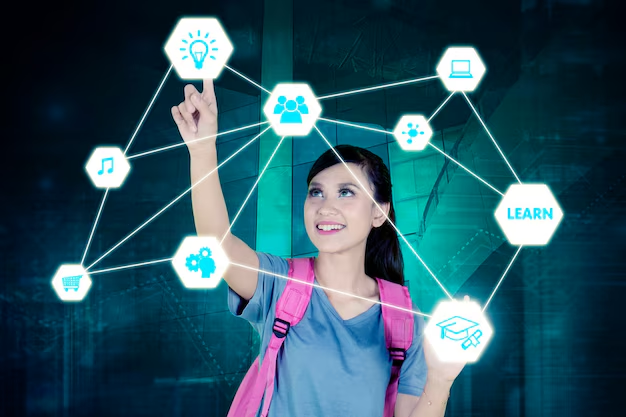Technology has revolutionized modern education, transforming how students learn, teachers teach, and educational institutions operate. From digital classrooms to interactive learning tools, technology has created more accessible, engaging, and personalized learning experiences. It has also bridged gaps in education, bringing opportunities to underserved communities while reshaping traditional educational practices.
Here, we’ll explore the profound influence of technology on modern education and how it continues to shape the future of learning.
1. Enhanced Accessibility to Education
One of the most significant impacts of technology is its ability to make education accessible to people worldwide, regardless of geographical or economic barriers.
- Online Learning Platforms: Platforms like Coursera, Khan Academy, and edX provide free or affordable courses from leading institutions, making quality education available globally.
- Remote Learning: Tools like Zoom, Microsoft Teams, and Google Classroom have enabled students to continue learning remotely, especially during the COVID-19 pandemic.
- Assistive Technologies: Text-to-speech software, screen readers, and other assistive tools help students with disabilities access education more effectively.
2. Personalized Learning Experiences
Technology allows for tailored educational experiences that adapt to individual student needs, preferences, and learning paces.
- Adaptive Learning Software: Programs like DreamBox and ALEKS use algorithms to adjust content difficulty based on student performance, ensuring optimal learning progression.
- Data-Driven Insights: Teachers can use analytics tools to monitor student progress, identify weaknesses, and provide targeted support.
- Self-Paced Learning: Digital courses and resources enable students to learn at their own pace, revisiting materials as needed.
3. Interactive and Engaging Learning Tools
Technology has made learning more interactive and engaging, helping students retain information and develop critical thinking skills.
- Gamification: Educational apps like Kahoot! and Duolingo use game elements like points, badges, and leaderboards to motivate learners.
- Virtual Reality (VR): VR tools like Google Expeditions allow students to explore historical landmarks, space, or even the human body in immersive ways.
- Augmented Reality (AR): AR apps enhance traditional textbooks and classrooms by overlaying digital information onto real-world objects, making lessons more dynamic.
4. Collaboration and Communication

Modern technology facilitates collaboration and communication among students, teachers, and peers, both locally and globally.
- Digital Collaboration Tools: Applications like Google Docs, Padlet, and Slack enable real-time collaboration on projects and assignments.
- Global Connectivity: Students can participate in virtual exchanges, connecting with peers worldwide to learn about different cultures and perspectives.
- Parent-Teacher Communication: Technology platforms streamline parent-teacher interactions through messaging apps, online portals, and progress tracking systems.
5. Efficient Administration and Resource Management
Technology has also improved the efficiency of educational institutions by streamlining administrative tasks and resource allocation.
- Learning Management Systems (LMS): Platforms like Moodle and Blackboard help educators organize course materials, assignments, and grades in one place.
- Digital Libraries: Online libraries and databases like JSTOR provide students and teachers access to extensive academic resources.
- Automation: Administrative tasks like attendance tracking, scheduling, and fee management are automated, saving time and reducing errors.
6. Bridging Educational Gaps
Technology plays a crucial role in addressing disparities in education by providing resources to underserved communities and enabling flexible learning options.
- Open Educational Resources (OER): Free online resources help students and teachers in low-income areas access high-quality materials.
- Mobile Learning: Smartphones and tablets make learning accessible to students who lack access to traditional computers or classrooms.
- Virtual Tutoring: Online tutoring services connect students with qualified educators, even in remote locations.
7. Challenges and Considerations
While technology offers numerous benefits, it also brings challenges that educators and policymakers must address.
- Digital Divide: Not all students have equal access to devices or the internet, creating disparities in learning opportunities.
- Screen Time Concerns: Excessive screen time can impact physical and mental health, emphasizing the need for balanced technology use.
- Data Privacy: Protecting student data from breaches and misuse is critical in an increasingly digital educational landscape.
Conclusion
Technology has profoundly influenced modern education, making it more accessible, personalized, and engaging. From enabling remote learning to fostering global collaboration, technological tools have enhanced the quality of education and expanded opportunities for learners worldwide. However, addressing challenges such as the digital divide and ensuring ethical technology use remains crucial.
As technology continues to evolve, its integration into education will likely deepen, paving the way for even more innovative and inclusive learning experiences.
FAQs
1. How has technology improved education accessibility?
Technology has improved accessibility through online learning platforms, remote education tools, and assistive technologies, making quality education available to a broader audience.
2. What are the benefits of gamification in education?
Gamification increases student engagement and motivation by incorporating game-like elements such as rewards, challenges, and progress tracking into the learning process.
3. How does technology support personalized learning?
Technology enables personalized learning through adaptive software, data analytics, and self-paced courses that cater to individual student needs and learning styles.
4. What challenges does technology pose in education?
Challenges include the digital divide, concerns over excessive screen time, data privacy issues, and the potential for over-reliance on technology in the classroom.
5. What role does virtual reality play in education?
Virtual reality offers immersive learning experiences, allowing students to explore subjects such as history, science, and geography in interactive and engaging ways.


